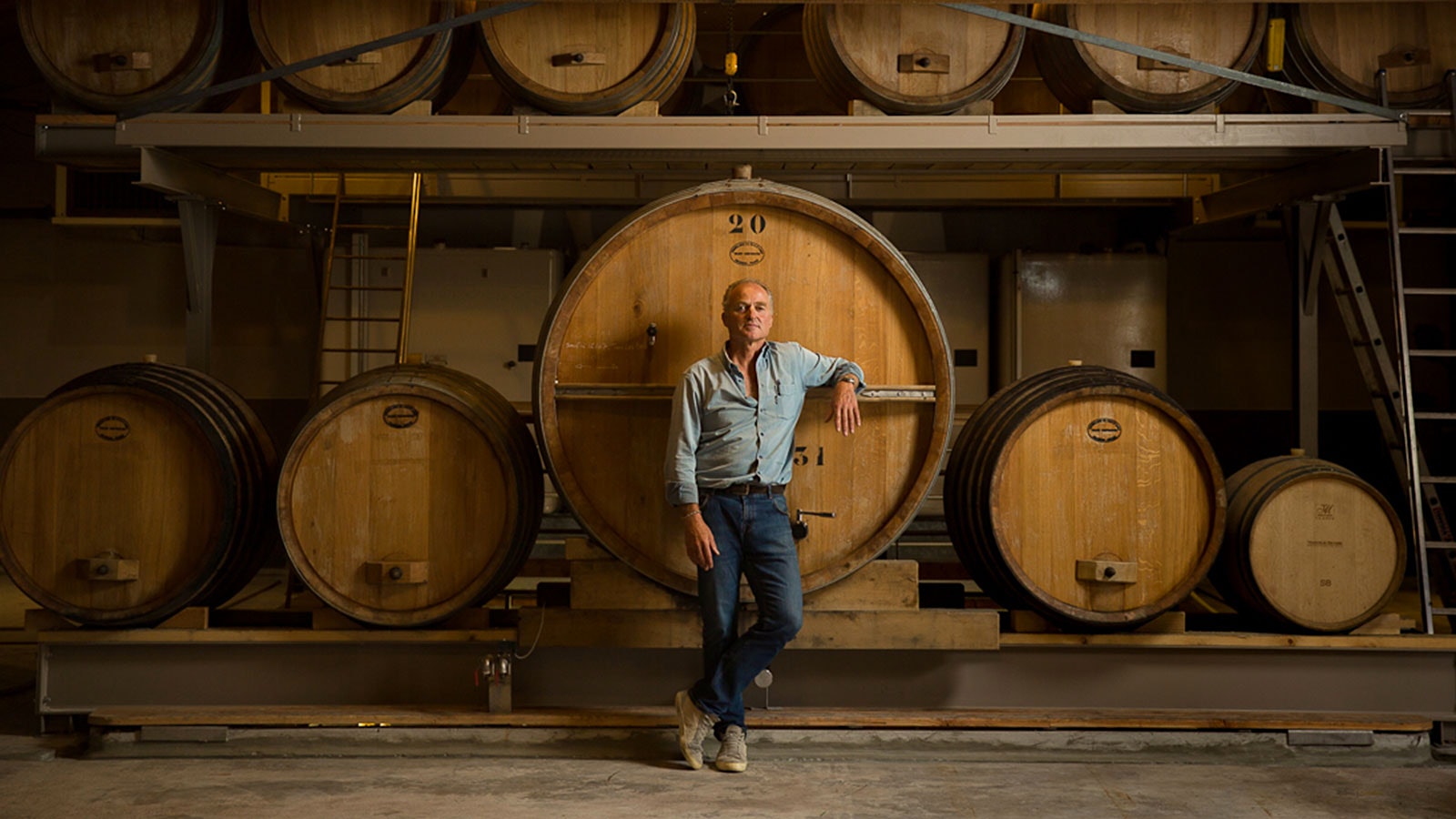On the afternoon of Aug. 14, a violent storm and small tornado hit the French town of Bédarrides, with 120 mph wind gusts and large hailstones inflicting damage in vineyards along the eastern side of Châteauneuf-du-Pape. According to reports from local vignerons, the primary impact was felt in La Crau, the famed vineyard on a plateau in the southeast of the appellation, considered by many to be Châteauneuf’s finest parcel. Well-known wineries, including Vieux Télégraphe, Château La Nerthe, Château de Nalys, Domaine La Boutinière and Guillaume Gonnet, among others, source fruit from this lieu-dit for their top cuvées.
“We estimate that we have lost today between 70 percent to 90 percent of the grapes in our Vieux Télégraphe plots,” Daniel Brunier, the fifth generation to run his family’s estate, told Wine Spectator. Brunier describes the vineyard—where his family has grown grapes since 1890—as “completely shredded; not a leaf is left. Only a few partially bruised grapes remain attached to the vine.” As a result, Vieux Télégraphe Blanc 2022 will not be produced, he reports, adding it’s still too early to tell if any Vieux Télégraphe Rouge 2022 can be made.
“The grapes themselves are destroyed and so are the leaves,” said Kelly Gonnet, who owns and operates Guillaume Gonnet with her third-generation winemaking husband. “It was so violent, and we can see many trees have been split and uprooted around the village. The good news is that none of the vines in La Crau were uprooted and they should make a full recovery for the next vintage. The vineyards on this plateau are over 100 years old and it would’ve been heartbreaking if they were permanently damaged.”
Others reported that significant hailstorms pummeled the neighboring village of Courthézon and damaged surrounding vineyards, many of which lie within the Châteauneuf appellation. Some have estimated that 25 percent of Châteauneuf-du-Pape’s vineyards were affected, though the growers Wine Spectator spoke with said that the full extent of how much fruit was lost will not be known until harvest. No site was as severely impacted as La Crau, they say.
“On the other side of Châteauneuf, at Château Maucoil, we did not even have any hail,” said Benoit Lavau of Maison Lavau, which farms vineyards across the Southern Rhône. “The storm was very localized.”
Described as a “tornade Americaine” by the French newspaper, Le Dauphiné Libéré, for its resemblance to weather phenomenons more commonly seen in the U.S. South and Midwest, it was a highly unusual weather event.
“We can say without hesitation that this was the first time that such an event occurred here in living memory,” Brunier explained. “We have been affected by hail in the past, particularly [in] 1963 and 1964, but absolutely nothing comparable to what happened on Aug. 14.”
This was the latest freak weather occurrence in a season filled with evidence of a changing climate; Europe has experienced a summer marked by extreme drought, heat waves and forest fires. Two days after the wind and hail ripped through, on Aug. 16, record-breaking thunderstorms in Paris triggered destructive flash flooding; two days after that, heavy rain and hurricane-force winds over 136 mph left eight dead in France and Italy.
In spite of the damage and lingering uncertainty, Southern Rhône vignerons remain optimistic about the overall 2022 vintage. “It was a real shock to lose so many grapes to this natural disaster, but we are extremely grateful no one was hurt and the remaining grapes are in excellent condition,” said Gonnet. “We are hoping to see a vintage that is very nice in quality, obviously smaller in quantity.”
Brunier, too, is looking on the bright side, grateful that the Mistral winds have been “blowing intensely ever since the tornado,” so the ripe fruit that survived will be dry and rot-free. “The quality of the fruit is superb, and continuing to mature in other plots that historically ripen later, as well as our vineyards in Gigondas, where we produce Domaine les Pallières, and in Ventoux, where we produce red and white Pigeoulet as well as Mégaphone.”
“Luckily, our profession is one of passion,” said Brunier, “which enables us to see the positive side.”
Stay on top of important wine stories with Wine Spectator’s free Breaking News Alerts.
